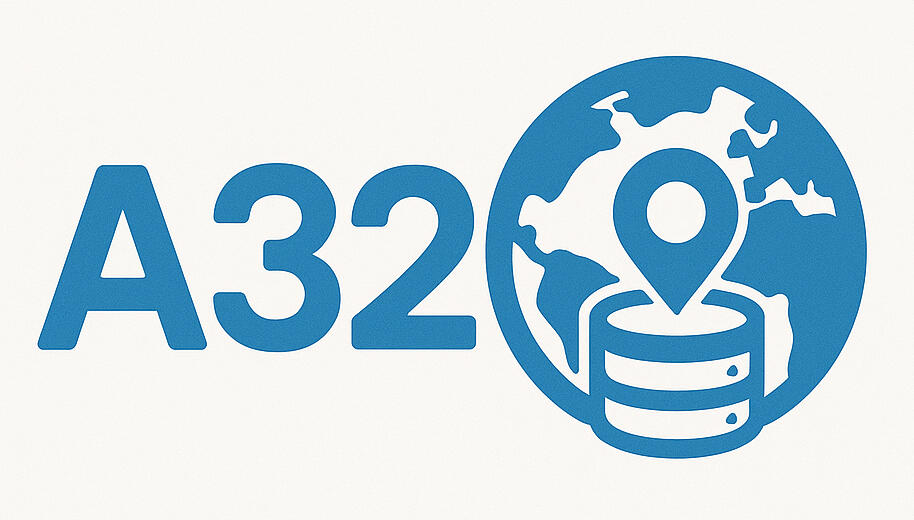AI Systems for Economy, Food, and Humanity
A32i
A unified public benefit platform delivering real-time oversight and intelligence for economic sustainability, food distribution, and homelessness response — globally.


Live Data for Sustainable Policy and Decision Making
Governments and Municipalities all over the world are driving demand for actively onboarding Ai technology. All current request are for specific applications and not for single collection points to correlate and process department and section data with machine learning tools built with an eye for sustainability. Our platform is the first of its kind to provide a continuous learning solution embedded for governments to connect their data directly to sustainable and valuable outputs. The base level of our Technology Offering is a dashboard that collects any municipal data and processes it with our sustainability logic tools, creates digital twins for decision making, and value adds with department notification learning. We further approach the problem with a three part solution, continuously learning the greatest economic output; a specific, drill-down, solution that has a singular focuses; and a social mission to help round out the system. Learn more about our solutions below:
[Fullcirlce Economy Ai]
Economic Dashboard with Ai for Municipalities that gives constant real-time output data; digital twin capacities; economic learning for greater production, sustainability, and waste reduction. This allows cross sector correlation and third party integration for greater reach and better decisions making. Where needed, individual solutions, can be careered in as little as 3 months.
Outputs give the capacity for Interactive Data (public facing), allowing a greater input, data, and constituent participation; expanding democracy and increasing cost to value. Policy generation and Data distribution (internal) are added values that create speed and easy of use with Executive teams and beyond.
[Ai.Food]
Ai for food across Municipalities: Tracks all food production, costs, and distribution within the municipality. From farm to restaurant, water use to table waste, this application brings on any data within the food industry. Continuous monitoring and learning redistributes waste, effectively changes taxation; creates public awareness, competitive growth and economic fueling, and danger removal; making effective decision modeling available now.
[Homelessness.ai]
Homelessness.ai is a public benefit foundation with the mission to change how the world sees homelessness by 2050. It uses AI to analyze intake data, camera inputs, and cross-sector programs to classify each individual into one of five types. We’re actively building partnerships with government agencies, academic institutions, and technology collaborators to create a framework for how society can solve homelessness together.

In the long run, our solutions aren’t just about next wave technology or market timing; they are about sustainability: ensuring that the Governments and Municipalities of tomorrow continue to have the best solutions to create sustainable outcomes for themselves, their constituents, and the planet as a whole.
Market Awareness
We are entering the market at a unique time when Ai awareness is not yet saturated and when governments are eagerly seeking the update of their technologies. Much of this value is still being defined by the companies and individuals that are creating Ai solutions, giving A32i the perfect storm to embed early, create massive impact, and grow with extreme speed. A32i is creating solutions that are being sought after by most governments in the world, making the timing and market placement excellent for A32i to become a long term value creator and provider that governments trust.

Market Report: Driven by increasing regulatory pressures, investor expectations, and the need for data-driven insights to improve sustainability practices; the global demand for AI in ESG (Environmental, Social, and Governance) is experiencing rapid growth.
Here's a breakdown of the factors contributing to the demand:
1. Regulatory Landscape:
* Governments worldwide are implementing ESG regulations and mandates for corporate sustainability reporting that are more strict than ever before.
* AI-powered solutions can automate and streamline ESG reporting processes ensuring compliance and reducing the burden on organizations.
2. Investor Expectations:
* Investors are increasingly prioritizing ESG factors in their investment decisions, demanding greater transparency and accountability from companies.
* AI helps companies collect, analyze, and report ESG data more effectively, meeting investor expectations and attracting sustainable investments.
3. Need for Data-Driven Insights:
* Organizations recognize the importance of data in understanding their ESG performance and identifying areas for improvement.
* AI can process vast amounts of complex data, including satellite imagery, IoT sensor data, and corporate disclosures, to provide actionable insights for enhancing sustainability practices.
4. Operational Efficiency and Cost Reduction:
* AI can optimize resource usage, reduce waste, and enhance energy efficiency, leading to cost savings and improved operational performance.
* AI can optimize supply chain logistics, predict energy consumption patterns, and improve waste management processes.
5. Risk Management and Mitigation:
* AI can analyze potential environmental and social risks, enabling organizations to implement proactive measures and enhance their resilience.
* This includes predicting climate-related risks, assessing supply chain vulnerabilities, and identifying potential social and ethical issues.
Market Growth and Projections:
* The global AI in ESG and Sustainability market is projected to reach USD $14.87 billion by 2034, growing at a CAGR of 28.20% from USD $1.24 billion in 2024.
* North America currently leads the market, capturing 43.8% of the global share in 2024.
* The U.S. market alone is valued at USD 0.48 billion in 2024 and is projected to grow at a CAGR of 26.7%.
Key Applications of AI in ESG:
* ESG Data Collection and Analysis: AI-powered platforms automate the collection and analysis of ESG data from various sources, providing real-time insights and improving reporting accuracy.
* ESG Risk Management: AI algorithms can predict and assess potential environmental, social, and governance risks, enabling organizations to implement mitigation strategies proactively.
* ESG Reporting and Compliance: AI can automate the generation of ESG reports and ensure adherence to evolving regulatory standards and frameworks.
* Sustainable Investment: AI can analyze vast datasets to identify sustainable investment opportunities and optimize ESG portfolios.
Conclusion:
The demand for AI in ESG is expected to continue growing significantly as organizations strive to improve their sustainability practices, meet regulatory requirements, and attract ESG-conscious investors.https://www.linkedin.com/pulse/ai-esg-market-powering-smart-sustainability-decisions-markets-us-eooxc#::text=Report%20Overview,USD%200.48%20billion%20in%202024.
https://market.us/report/ai-in-esg-and-sustainability-market/#::text=Key%20Takeaways,expansion%20in%20the%20coming%20years.
https://www.marknteladvisors.com/research-library/esg-reporting-software-market.html#:~:text=Based%20on%20the%20end%20users,by%20employing%20ESG%20reporting%20tools.
Case Studies 🇬🇭🇷🇼🇬🇪🇲🇹🇿🇦🇰🇪🇺🇬🇹🇿🇪🇹🇳🇬🇬🇭🇸🇳
12 Countries
With moderate AI integration (~25–50%) modernizing agriculture, streamlining government operations, and preventing poverty; even micro nations can unlock $45 Million+ in annual economic value—equal to 2–5% of GDP. Smarter food production alone could yield up to $12-90 Million per year, while integrated governance and targeted social programs may each contribute over $23-280 Million in annual value and well over a Billion in midsized nations.
Profile #1
St. Kitts and Nevis
Government Readiness:
Saint Kitts and Nevis has embedded AI into its national digital transformation agenda. With strong leadership from the ICT Ministry, 60% of government records digitized, and a skilled pipeline emerging from programs like Future Coders Caribbean, the country is ready to scale AI. Prime Minister Drew underscored this vision, stating, “AI will help us build systems that work for everyone.”Projected Financial Impact:
A 30% rollout of A32i platforms could yield $45–$66 million annually for Saint Kitts and Nevis—approximately 5.5% of its national budget. This includes $12M in agricultural resilience, $15M in smarter governance, and $8M in social uplift. National ROI is achievable within 30 months.
Profile #4
Mauritius
Government Readiness:
Mauritius is actively integrating AI into its national development agenda. Hosting the AI Summit under UNESCO’s patronage and implementing the Mauritius AI Strategy signal deep national commitment to digital transformation. As President Roopun said, “Mauritius must lead by example.” With infrastructure, education, and investment tools in place, AI readiness is high across the country’s public and private sectors.Projected Financial Impact:
A 30% integration of A32i platforms could yield an annual uplift of $180–$275 million for Mauritius, equal to 7.8–11.9% of national GDP. Major gains include $70M in smarter governance, $30M in food systems, and $15M in social cost recovery. National ROI is projected within 18–36 months.
Profile #5
Malta
Government Readiness:
Malta is one of the EU’s most AI-prepared nations, with active investment incentives, regulatory oversight via MDIA, and a national strategy that prioritizes ethics and industry acceleration. Minister Schembri stated, “AI is no longer a concept of the future—Malta is making it a tool of the present.” This reflects both readiness and deployment momentum.Projected Financial Impact:
At 30% A32i integration, Malta could see $190–$266 million in annual uplift—representing over 14% of national GDP. Key returns include $85M in public sector efficiency, $22M in smart agriculture, and $13M in employment recovery. Payback is expected within 12–24 months.
Profile #6
Guyana
Government Readiness:
Guyana is rapidly emerging as a regional AI leader with national infrastructure investments, inclusive public outreach, and a new AI strategy that places ethics and equity at the core of innovation. President Irfaan Ali said, “We must move from data collection to intelligent, people-centered governance.” From village hubs to international scholarship pipelines, AI readiness is scaling nationwide.Projected Financial Impact:
A 30% A32i integration could yield $164–$231 million annually for Guyana—equivalent to up to 12.2% of national GDP. Largest gains include $75M in governance improvements, $25M in agri-efficiency, and $14M in workforce recovery. Nationwide returns are projected within 30 months.
Profile #8
Ghana
Government Readiness:
Ghana has built one of West Africa’s strongest AI frameworks, driven by national strategy, educational expansion, and inclusive innovation. With active pilots in healthcare, agriculture, and public service, the country is already demonstrating early returns. “AI will help Ghana leapfrog traditional development barriers,” said Minister Ursula Owusu-Ekuful—highlighting Ghana’s blend of ambition, equity, and speed.Projected Financial Impact:
A 30% A32i rollout could deliver $322–$438 million annually in value creation—roughly 4.3% of Ghana’s GDP. Key drivers include $160M in government efficiency, $45M in agricultural resilience, and $25M in social mobility. Returns are forecast within 18–30 months.
Profile #9
Georgia
Government Readiness:
Georgia is executing a nationally coordinated AI transformation built on smart regulation, deep partnerships, and inclusive education. Through the Digital Georgia Strategy and GovStack, the country is embedding AI across services and institutions. “AI allows small states to play big roles,” said Vice Prime Minister Davitashvili, underscoring Georgia’s vision of sovereignty through innovation.Projected Financial Impact:
With 30% A32i integration, Georgia could realize $249–$338 million in annual value—around 2.9% of GDP. Key drivers include $145M in public efficiency, $25M in precision agriculture, and $14M in labor market reintegration. National rollout ROI is expected within 18–30 months.
Profile #10
Rwanda
Government Readiness:
Rwanda is one of Africa’s most AI-ready nations, thanks to its coordinated national policy, world-class training hubs, and localized innovation. “AI will be one of our strongest tools to bridge inequality and empower African economies,” said Minister Ingabire. With over 50 pilot projects already live, Rwanda is proving that strategic AI investment drives resilience and equity.Projected Financial Impact:
With 30% A32i integration, Rwanda could generate $480–$675 million annually—nearly 5% of GDP. Largest contributors include $200M from SME and GDP optimization, $90M in food system efficiency, and $80M from social reintegration. National ROI expected in under three years.
Profile #11
Malaysia
Government Readiness:
Malaysia has built a model AI ecosystem rooted in policy, education, and infrastructure. “Our vision is a connected, data-smart, and economically inclusive Malaysia,” said Minister Chang. With innovation flowing from city centers to rural villages, the country’s readiness ranks among ASEAN’s best.Projected Financial Impact:
A 30% A32i deployment could generate $6.25–$8.15 billion annually—up to 6.9% of GDP. Key sectors include $1.6B in SME optimization, $900M in agriculture, and $700M in social reintegration. ROI forecast within two years.
Profile #12
South Africa
Government Readiness:
South Africa has built the continent’s most robust AI framework, backed by national policy, provincial pilots, and public-private collaboration. “Artificial intelligence will not replace our people—it will retool our society,” said Minister Gungubele. Through smart regulation, national training hubs, and applied research, South Africa is ready to lead in ethical, productive AI deployment.Projected Financial Impact:
At 30% A32i integration, South Africa could generate $10–$12.8 billion annually—roughly 5.8% of GDP. Primary drivers include $3.2B in public sector gains, $1.6B in food resilience, and $1.5B in labor reintegration. Implementation ROI expected within 30 months.